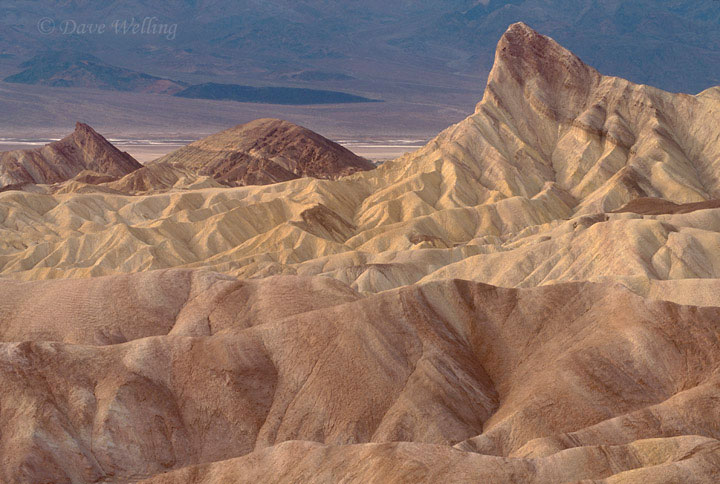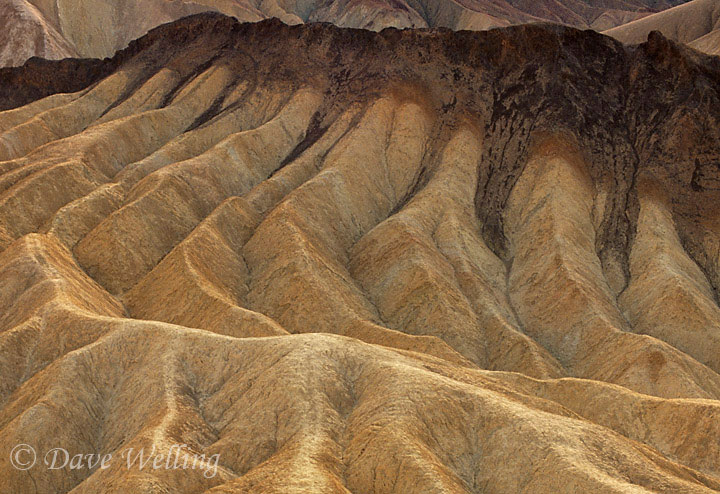You arrive at Death Valley, a great landscape photo destination at night, and prepare for a spectacular dawn the next morning to capture those great images you know are there. Unfortunately, the next morning dawns with high clouds and dull light, making the grand landscapes look flat and unappealing. Don’t give up or pack your gear! Take this opportunity to find interesting landscape details and “images within images” that soft light can really accentuate.
Look at this image of Zabriski Point. The high clouds reduced the shadows and tones and gave the scene a two dimensional feel. This grand landscape doesn’t work other than as a snapshot or record shot of where you were.

Change Your Approach
Take off your wide angle zoom lens and put on your 300 or 500mm telephoto and go searching for those interesting textures, and lines and forms, to create intimate scenes of your surroundings. The second image here is from the same location but with a 200-400mmF4 telephoto lens used to extract a small section of the overall image. The soft light, and a little post processing to add some color saturation, gives you an entirely different image and one that has a little mystery to it. The viewer wants to know more about what he or she is seeing and will be more engaged with your image.

Move Around
Also, don’t stay in the same spot to do your extraction image photography. Move around and look for other graphic or textural elements that might make excellent subjects for intimate scenics. This last image was taken several yards from my original position and faces more to the south. The leading line elements crowned with the darker top level of soil makes another interesting graphic image (and might be even more interesting in black and white – keep that in mind when photographing now that your digital color images can easily be converted to black and white).

Be Aware of the Wind
When you change your lens configuration in a case like this, always be mindful of the wind conditions. Wind is a common weather element in the desert and, while it might not affect a short lens/camera on a tripod, it may well cause your image to be blurry with a longer or telephoto lens. Make sure you have your camera/lens locked down tight on your tripod and consider using mirror lock up and a cable release, especially if you are using shutter speeds in the ½ to 1/30 second range. These shutter speeds are subject to mirror slap and can severely affect the image sharpness.
About the author: Dave Welling is a full time professional photographer specializing in wildlife, landscape and nature with over 75,000 6×7, 6×4.5, and 35mm film and digital images. He has been capturing evocative images of the natural world for over 25 years, producing the highest quality images for publication. His images often capture unique behavioral characteristics of wildlife or special lighting or weather conditions of landscapes. You can see more of his work at www.strikingnatureimagesbydavewelling.com.
Have something to add to the story? Leave a comment or email editor@outdoorphotographyguide.com.
Share tips, start a discussion or ask other students a question. If you have a question for an expert, please click here.
Already a member? Sign in
No Responses to “Look for Landscape Details When You Have Bad Light”